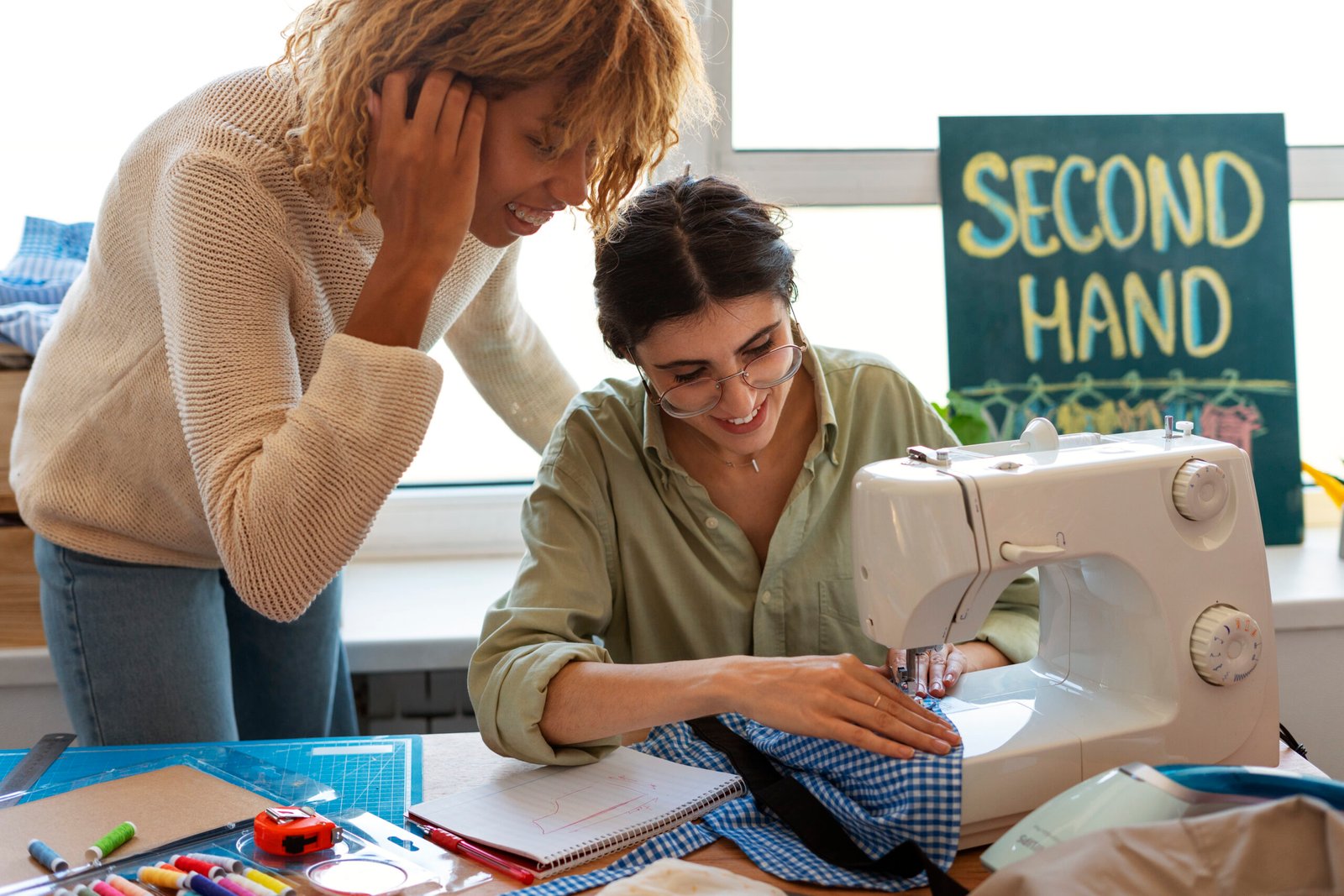When you sew, the type of seam you choose determines how strong, flexible, and attractive your project will be. The word nahttypen refers to the different kinds of seams used in sewing and tailoring. Each seam type serves a unique purpose — from keeping fabric edges neat to adding decorative touches. Understanding these types helps create clothes that not only look great but also last longer.
This guide explains various nahttypen, their applications, and how to pick the right one. Written simply, it’s perfect for beginners and 9th graders interested in sewing, fashion, or crafts.
What Are Nahttypen?
In sewing, nahttypen (seam types) describe how two or more pieces of fabric are joined. Each type has its own look, feel, and strength. For example, some seams are flat and hidden, while others stand out as design details.
Seams aren’t just lines of thread. They give structure to garments, define shapes, and keep fabric layers together. Choosing the right seam depends on fabric thickness, elasticity, and the purpose of the garment.
Why Are Seam Types Important?
The seam type affects both how a garment looks and how long it lasts. If the wrong seam is used, a piece of clothing might tear easily or look unfinished. On the other hand, choosing the correct seam gives a professional and durable result.
For instance:
A Zigzag seam is flexible and perfect for stretchy fabrics.
A French seam hides raw edges, ideal for delicate fabrics like silk.
A Flat-felled seam is strong and often seen on jeans.
By understanding nahttypen, you can match each seam to the right fabric and purpose.
Basic Criteria for Choosing a Seam Type
When selecting a seam type, consider these key factors:
Fabric Thickness: Heavy fabrics need strong seams like flat-felled or double seams.
Elasticity: Stretch fabrics require flexible seams such as zigzag or overlock.
Visibility: Hidden seams are best for clean looks, while visible seams can add design flair.
Purpose: Decorative seams are chosen for fashion, while reinforced seams are used for strength.
Common Nahttypen and Their Uses
Straight Seam
The straight seam is the most basic and widely used. It involves stitching two fabric pieces edge-to-edge with a straight line. It’s simple, fast, and neat — great for shirts, skirts, and basic garments.
Zigzag Seam
The zigzag seam forms a zigzag pattern across the fabric. This type allows for stretch and flexibility, making it ideal for knits, sportswear, and edges that might fray. It’s often used to finish raw edges when an overlocker isn’t available.
Overlock Seam
The overlock seam (also known as serging) trims fabric edges while sewing, binding the edges with thread loops. It’s both clean and durable, preventing fraying and saving time. Most factory-made clothes use this type of seam.
French Seam
A French seam hides raw fabric edges inside a double-stitched seam. It’s often used in fine fabrics like chiffon, silk, or satin to prevent fraying and give a neat interior finish. It’s common in high-end garments.
Flat-felled Seam
The flat-felled seam folds both seam allowances to one side and stitches them down. This makes it extra strong and resistant to wear. You’ll find it in jeans, workwear, and outdoor clothing.
Lapped Seam
The lapped seam overlaps two pieces of fabric and stitches them together. It’s used for leather, denim, and heavy fabrics. This seam can also be decorative, depending on the stitching used.
Mock Flat Seam (Flatlock)
A flatlock seam lies flat against the fabric and has a decorative appearance. It’s common in sportswear because it’s comfortable and doesn’t rub against the skin.
Bound Seam
The bound seam uses bias tape or fabric strips to cover raw edges. It adds color contrast and durability to seams. Often used in jackets or unlined garments, it gives a polished interior look.
Double Stitch Seam
The double stitch seam uses two parallel lines of stitching, adding both strength and style. It’s perfect for areas that endure extra tension, such as trouser sides or sleeve seams.
Decorative Seams
Some seams are designed mainly for visual appeal. Decorative nahttypen use special threads, patterns, or colors.
Examples include:
Topstitched seams: Add strong, visible lines for style.
Piped seams: Use narrow fabric cords for contrast.
Embroidery seams: Combine structure and design.
These seams not only hold fabrics together but also enhance fashion and creativity.
Practical Applications of Nahttypen
Everyday Clothing
Simple seams like straight or zigzag are used for everyday garments like shirts, skirts, and dresses. They balance durability and comfort.
Sportswear
Flatlock and zigzag seams work best for activewear. Their flexibility supports movement without breaking stitches.
Formal and Delicate Clothing
French seams and bound seams are preferred for dresses and luxury fabrics. They hide rough edges and give a refined appearance.
Denim and Workwear
Flat-felled and double seams are essential for jeans and uniforms. They handle stress, friction, and frequent washing.
Home Décor
For curtains, cushions, and upholstery, lapped or bound seams provide both strength and decorative appeal.
Comparing Nahttypen
| Purpose | Best Seam Types |
|---|---|
| Stretch fabrics | Zigzag, Overlock, Flatlock |
| Fine fabrics | French, Rolled Hem |
| Heavy-duty clothing | Flat-felled, Double, Lapped |
| Decorative designs | Topstitched, Piped, Bound |
| Quick assembly | Straight, Overlock |
This table shows how seam choice varies depending on the fabric and project type.
Tips for Perfect Seams
To make your sewing cleaner and more professional:
Adjust Tension: Proper tension prevents puckering or loose threads.
Use the Right Needle: Match needle size and type to your fabric.
Choose the Right Thread: Cotton thread for natural fibers, polyester for synthetics.
Press as You Sew: Ironing between steps keeps seams crisp and flat.
Test on Scraps: Always check stitch type and length on a sample before sewing the final piece.
Common Seam Mistakes to Avoid
Using a non-stretch seam on stretchy fabric – can cause ripping.
Skipping seam finishing – leads to fraying and loose threads.
Improper seam allowance – may alter garment size or shape.
Uneven stitching – results in an unprofessional appearance.
Correcting these mistakes improves both quality and confidence.
Conclusion
Understanding nahttypen helps you sew with precision, creativity, and confidence. Whether you’re repairing clothes, creating fashion pieces, or crafting at home, knowing which seam type to use can make all the difference.
By practicing with various seams — from the simple straight stitch to complex ones like the flat-felled or French seam — you’ll gain control over your designs and achieve professional-looking results every time.

